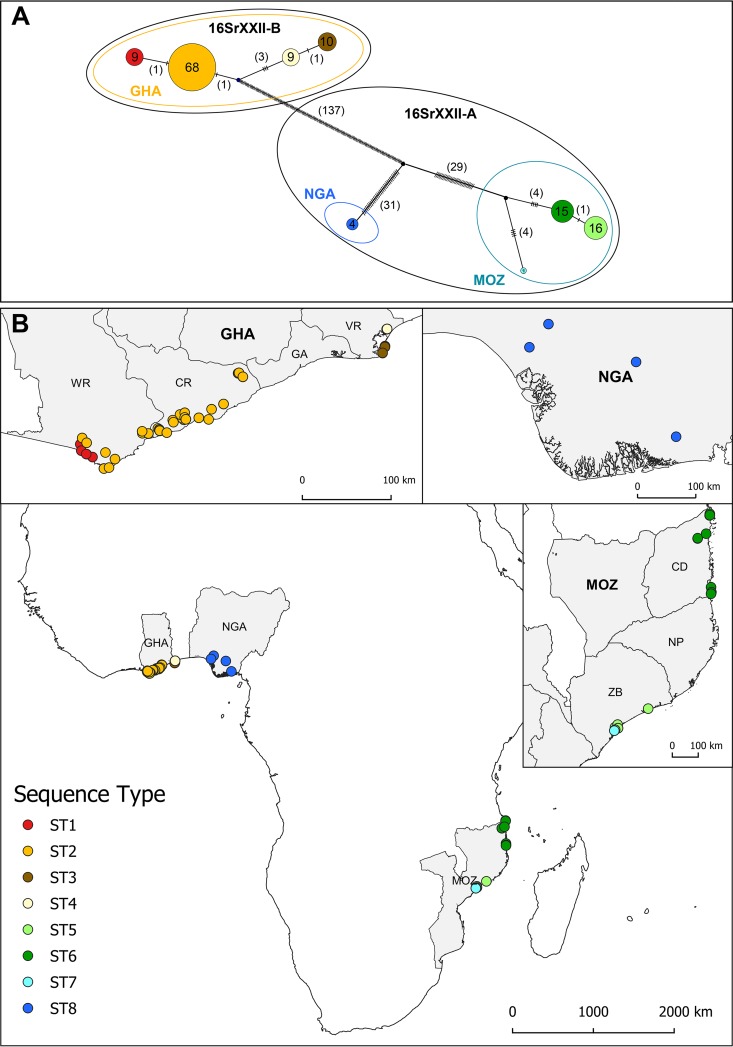FIG 1.
(A) Integer neighbor-joining network calculated from eight housekeeping gene (dnaC, gyrB, leuS, lpd, recA, rplV, rsmI, secA) concatenated sequences (4,512 bp) of 132 “Candidatus Phytoplasma palmicola” samples originating from three African countries, Ghana (GHA), Mozambique (MOZ), and Nigeria (NGA). Each circle represents a sequence type (ST). The numbers inside each circle correspond to the numbers of samples presenting identical STs, and the numbers in parentheses represent the numbers of single-nucleotide polymorphism (SNPs) between STs. Small ellipses describe the three different geographic populations. Large ellipses represent the 16Sr RFLP subgroup deduced from 16S rRNA gene sequences. (B) Geographical distribution of the 132 “Ca. Phytoplasma palmicola” samples according to their STs at the African continent level, in Ghana (96 samples), in Mozambique (32 samples), and in Nigeria (4 samples). The Ghanaian coastal regions of western region (WR), central region (CR), greater Accra (GA), and Volta region (VR) and the Mozambican provinces of Cabo Delgado (CD), Nampula (NP), and Zambezia (ZB) are delimited.

